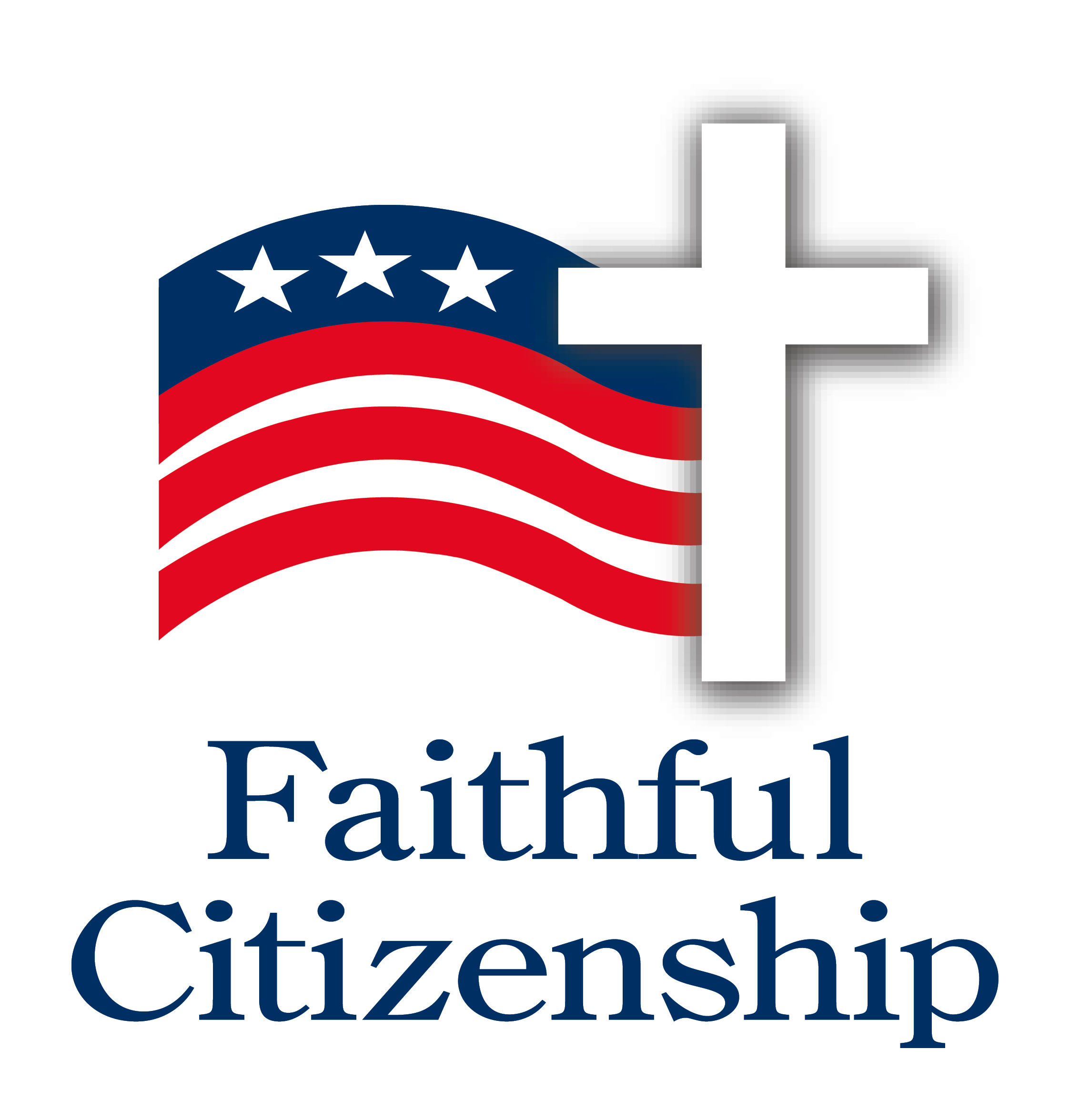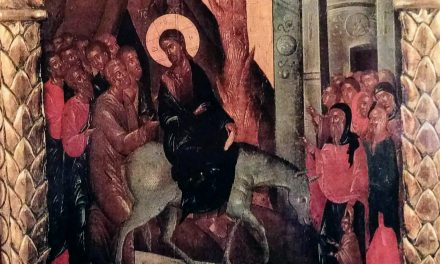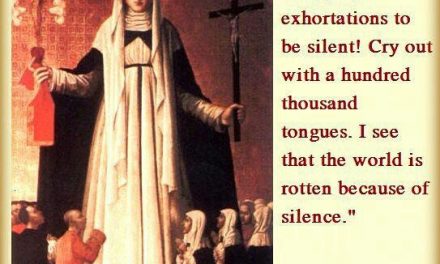Guest Post by Mary Jo Iozzio
“Proclaim Liberty Throughout All the Land Unto All the Inhabitants thereof,” Leviticus 25:10. So states the inscription on the United States’ most famous bell, located outside Philadelphia’s Independence Hall. The bell holds both iconic and ambitious meanings –from the ideals of freedom in the founding of the nation to the cause of abolition, and today’s work of ensuring peace and security for those who are marginalized and oppressed. Frustratingly, even the bell’s iconic history exposes yet another example of America’s original sin that plays out in our city streets and byways today.
Commissioned to commemorate the 50th anniversary of Pennsylvania’s original constitution, William Penn’s “Charter of Privileges” (1701), the bell arrived in Philadelphia September 1, 1752, and rang 270 years ago to call Pennsylvania’s lawmakers to their assembly meetings and alert townspeople for news. The “Charter” created a local governing body to propose and uphold laws and protected religious freedom. “Penn called the capital city Philadelphia, the ‘City of Brotherly Love,’ to reflect his desire that his colony serve as a haven for Quakers and other oppressed Christians seeking religious freedom.”[1] Notably, even before the Revolution, the very start of the American Experiment included an explicit focus on freedom from oppression. Nevertheless, the experiment was threatened not only by the war for independence and by the peculiar institution of slavery, peculiar not for its Southern “quaint curiosity”[2] but for its brutal dehumanization and enslavement of Africans.[3]
The community of Quakers arrived mid 17thc. to the ‘New World,’ where Penn and Friends (As Quakers are known) both trafficked and kept slaves among other business and agricultural pursuits. By the start of the 18thc. the Friends began to challenge the scandal of slavery. Abolition was finally embraced at their 1758 Philadelphia Yearly Meeting when they unanimously agreed: “after weighty consideration [of those] who have any negro or other slaves … to put a stop to … importing, buying, selling, or keeping of slaves for term of life [or years].”[4] The Quakers were well-ahead in recognizing the arc of the moral universe in its bend toward abolition, liberty, and justice for all. The US Civil War (1861-1865) focused on the economy attached to slavery in the Confederate States and any future territories.
The Quakers made the explicit connection between the Liberty Bell, the scandal of slavery, and the need for abolition across the states. The first reference to the Liberty Bell in print was published in Quaker’s Friends of Freedom’s Anti-Slavery Record, wherein R.G Williams of Boston’s Anti-Slavery Society wrote a challenge to the Bell’s inscription in 1835: “Hitherto, the bell has not obeyed the inscription; and its peals have been a mockery, while one sixth of all inhabitants are in abject slavery.”[5] In 1837, the same society published in its monthly, The Liberty Bell, the first image of the Bell as an icon.[6] And from 1839 to 1858 Boston women abolitionists of the Friends of Freedom published a collection of essays and poetry in their annual giftbook, The Liberty Bell, with fundraising sales promoting the abolitionist cause at their annual National Anti-Slavery Bazaar.[7] Further, journalist and uncompromising abolitionist William Lloyd Garrison published The Liberator from 1831-1865, founded the New England Anti-Slavery Society (1832), supported the founding of New York’s American Anti-Slavery Society (1833), and coined the icon’s appellation in the poem entitled “The Liberty Bell” (first published in 1839;[8] re-published in 1844, cf. n.21) … and the name stuck!
The abolitionists were right in identifying slavery as “the sum of all villainies … indeed the sin of sins … The sin and sinner should both be denounced as such, and the latter called to instant repentance and the duty of making immediate restitution of the stolen liberties of their slaves”[9] (restitution in today’s dollars for this uncompensated labor is estimated between $5.9–14.2 trillion[10]). In both North and South, the building of the nation was tied from its start to internalized white supremacy over internalized Black inferiority, with dark and darker skinned peoples on the lowest rungs of the social ladder. “Grappling with the legacy of slavery, therefore, requires grappling with the white supremacy that preceded the founding of the United States and persisted after the end of legalized slavery.”[11]
The invention of race as a category distinguishing one seemingly homogenous group from another is supported by ancient tools of oppression. Oppression is contrary to the principles of the Republic—and certainly to our faith—especially as the colonies were founded expressly for the freedom of religious practice. This perversion in the organization of colonies by those seeking freedom is both peculiar and unique to the institution of slavery in the US: peculiar since it is based on skin color and unique as a life-long sentence, internalized by those who are oppressed and oppressor alike, inclusive of an exacting construction with codified enforcement of laws, rules, and practices.
Whiteness and Blackness are the result of social constructs devised by the pilgrims and the founders of the Republic to stratify the masses with institutional force. Viciously, as subject to the master and later to the “boss,” colorism also infected minority communities (then and now) with a “tendency to attribute status toward members of a [contrived] racial category based on the lightness or darkness of their skin tone.”[12] Further complicating the hope of post-reconstruction progress toward real equality today, colorism has replaced overt racism. From hiring practices to incarceration and death row, “[t]hough it is mostly covert, our society has developed an extremely sophisticated and often denied, acceptability index based on gradations in skin color … It is applied to African Americans, American Indians, to Asians and Pacific Islander Americans, and to Hispanic Americans.”[13] The United States is still mired in its inglorious past as skin color presents a preeminent mark informing assumptions about others that surreptitiously exercise determinative access to their exercise of civic, economic, religious, social, and personal liberty.
Presumably the United States has reconciled with its history, but the legacy of oppression haunts us still in oblique and obvious ways. History informs the present, despite comments that suggest “we” are living in a post-racial America and for minority communities to ‘just get over it.’[14] “Races are indeed invented social categories, but they are socially real and reenacted in the everyday life in encounters in all sorts of situations and spaces.”[15] Thus, the near daily reports of altercations between Persons of Color and law enforcement, for example, confirm the residual power of stereotypes to warp perceptions of ‘the other.’ Further, “As a consequence of our nation’s historical failures to address the legacy of racial inequality, the presumption of guilt and the racial narrative that created it have significantly shaped every institution in American society.”[16] From law enforcement to education, employment, healthcare, and recreation … race, gender, and ethnicity-based inequities haunt the promises of this America.
If we truly “hold these truths to be self-evident, that all [people] are created equal, that they are endowed by their Creator with certain unalienable Rights, that among these are Life, Liberty, and the pursuit of Happiness,” then we must be forthright in protecting these rights and privileges for each and all. In place of the institution of slavery, we live now with institutionalized white power and privilege shackled to structures of oppression. The unfinished work of dismantling racism and restitution for harms committed in the distant and recent past requires sustained and conscious liberative effort in our classrooms, our research, and our communities.
How do we ensure that the icon of Liberty expressed in the Bell reaches—as the Statue of Liberty invites ‘all who yearn to breathe free’—when so many Persons of Color are at risk of early or violent death?[17] From health, education, and employment disparities to criminal victimization and weathering, liberties are grossly restricted and prematurely fatal. The icon is valuable for the promise it holds, especially for those whose oppression continues. Consider, as tourists approach the bell “an elderly black woman move[s] her hand toward the Bell several times, each time stopping short of actually touching it. She finally did touch it lightly and reverently. It was clear that she was not touching a potential commodity, but rather an object of singular, perhaps even sacred, character.”[18] And what else ought we do? The time may be right—it is long past—to commit to reparations as guided by descendants of those enslaved.[19]
We must continue the work of anti-racist solidarity for liberty to blossom in our time. This work requires continuous examination of our postures toward others by learning how to recognize academic, individual, interpersonal, institutional, and structural racism alongside a commitment to address inequities and harms in word and deed.[20] We are on notice: not a one of us has the luxury of “a bystander.”
Bio:
Mary Jo Iozzio holds the PhD from Fordham University and is Professor of Moral Theology at Boston College, School of Theology and Ministry since 2013 and previously at Barry University in North Miami, FL (1993-2013). She contributes to the Catholic Theological Ethics in the World Church First online platform of essays for the North American Forum. Her work includes engagement with Catholic Social Teaching, Disability Ethics, and Theological Voices from underrepresented communities. She is former co-editor of the Journal of the Society of Christian Ethics and an active member of the AAR, CTSA, and SCE. In addition to many articles and a few books, he is a past and current guest editor of the journal Religions.
“The Liberty Bell,” by H.R.H. Moore (1839)[21]
Ring loud that hallowed Bell! Ring it long, ring it long;
Through the wide world let it tell that Freedom’s strong:
That the whole world shall be free—the mighty crowd, the mighty crowd—
That the proud shall bend the knee, the haughty proud.
…
Ring it Southward, till its voice for slavery toll, for slavery toll;
And Freedom’s wakening touch rejoice both limb and soul.
…
Ring it till the slave be free, wherever chained, wherever chained;
Till Universal Liberty for aye be gained.
Ring it, till the young arise to Freedom’s fight, to Freedom’s fight.
[1] ExplorePAHistory.com, “The Vision of William Penn” (2019), http://explorepahistory.com/story.php?storyId=1-9-3
[2] See Ulrich Bonnell Phillips, American Negro Slavery: A Survey of the Supply, Employment and Control of Negro Labor as Determined by the Plantation Regime (New York: D. Appleton Company, 1918).
[3] See Kenneth M. Stampp, The Peculiar Institution: Slavery in the Antebellum South (New York: Vintage Books, 1956).
[4] Yearly Meeting, “A brief statement on the rise and progress of the testimony of the Religious Society of Friends, against slavery and the slave trade” (Philadelphia: Joseph and William Kite, 1843); Library of Congress, np; https://tile.loc.gov/storage-services/service/rbc/rbaapc/10000/10000.pdf.
[5] R.G. Williams, “The Liberty Bell,” The Anti-Slavery Record 1 (1835), 23; https://repository.wellesley.edu/object/wellesley30328.
[6] Jeffrey Hyson, “Exhibit Review: The Liberty Bell Center and The National Constitution Center,” Pennsylvania Magazine of History and Biography 127.3 (2004), 309.
[7] See Friends of Freedom, The Liberty Bell (Boston: National Anti-Slavery Bazaar, 1839-58); https://www.bl.uk/collection-items/american-abolitionist-literature-magazine.
[8] Anonymous, “The Liberty Bell,” The Liberator (1839), http://www-personal.umich.edu/~mdover/website/libertybell.htm’
[9] Archibald Grimke, William Lloyd Garrison (New York: Funk & Wagnalls, 1891), 70.
[10] Thomas Craemer, “Estimating Slavery Reparations: Present Value Comparisons of Historical Multigenerational Reparations Policies,” Social Science Quarterly 96.2 (2015): 639-655.
[11] Annette Gordon-Reed, “America’s Original Sin: Slavery and the Legacy of White Supremacy,” Foreign Affairs (January/February 2018); https://www.foreignaffairs.com/articles/united-states/2017-12-12/americas-original-sin?check_logged_in=1&utm_medium=promo_email&utm_source=lo_flows&utm_campaign=registered_user_welcome&utm_term=email_1&utm_content=20220715.
[12] Keith Maddox and Stephanie Gray, “Cognitive Representations of Black Americans: Re-exploring the Role of Skin Tone,” Personality and Social Psychology Bulletin 28.2 (2002), 250.
[13] Federal Glass Ceiling Commission, “Good Business: Making Full Use of the Nation’s Human Capital,” (Washington, DC: U.S. Department of Labor, 1995), 29; https://ecommons.cornell.edu/bitstream/handle/1813/79348/GlassCeilingFactFindingEnvironmentalScan.pdf?sequence=1&isAllowed=y.
[14] See Theodore Johnson, “Racism in 2013? Just Get Over It!,” Huffington Post (May 8, 2013), https://www.huffpost.com/entry/racism-in-2013-just-get-o_b_3201574.
[15] See Eduardo Bonilla-Silva, “The Structure of Racism in Color-Blind, ‘Post-Racial’ America,” American Behavioral Scientist 59.11 (2015), 1360.
[16] Bryan Stevenson, “Foreword,” in Jim Wallis, America’s Original Sin: Racism, White Privilege, and the Bridge to a New America (Grand Rapids: Brazos Press, 2016), xiv.
[17] See, Debra Umberson, Julie Skalamera Olson, Robert Crosnoe, Hui Liu, Tetyana Pudrovska, and Rachel Doherty, “Death of family members as an overlooked source of racial disadvantage in the United States,” Proceedings of the National Academy of Sciences 114.5 (2017): 915-920. See also Zinzi D. Bailey, Justin M. Feldman, and Mary T. Bassett, “How Structural Racism Works: Racist Policies as a Root of U.S. Racial Health Inequities,” The New England Journal of Medicine 384 (2021): 768-773; https://www.nejm.org/doi/full/10.1056/NEJMms2025396.
[18] Robey Callahan, “The Liberty Bell: From Commodity to Sacred Object,” Journal of Material Culture 4.1 (1999), 74.
[19] See, John W. Miller, “My ancestor owned 41 slaves. What do I owe their descendants?” America (November 28, 2018), https://www.americamagazine.org/arts-culture/2018/11/28/slavery-reparations-racism-232171?utm_source=piano&utm_medium=email&utm_campaign=2928&pnespid=veI5CXhJab0WyqLOoC3sGZCV5ByoUYZvL_m23PA2sRtmLRu6KMH6gXhQiQHqOXyir2cZ0Nbl.
[20] See National Museum of African American History & Culture, “Being Antiracist,” Talking About Race (2020), https://nmaahc.si.edu/learn/talking-about-race/topics/being-antiracist?fbclid=IwAR2WKbwgvkaG-wUggMReD-KSvdViIukS3Hg1xTRjFYF8fe_K_aWkoi9fqh4.
[21] H.R.H. Moore, “The Liberty Bell,” in Friends of Freedom, The Liberty Bell (Boston: Massachusetts Anti-Slavery Fair, 1844, cf n.8 above), 1-4.





